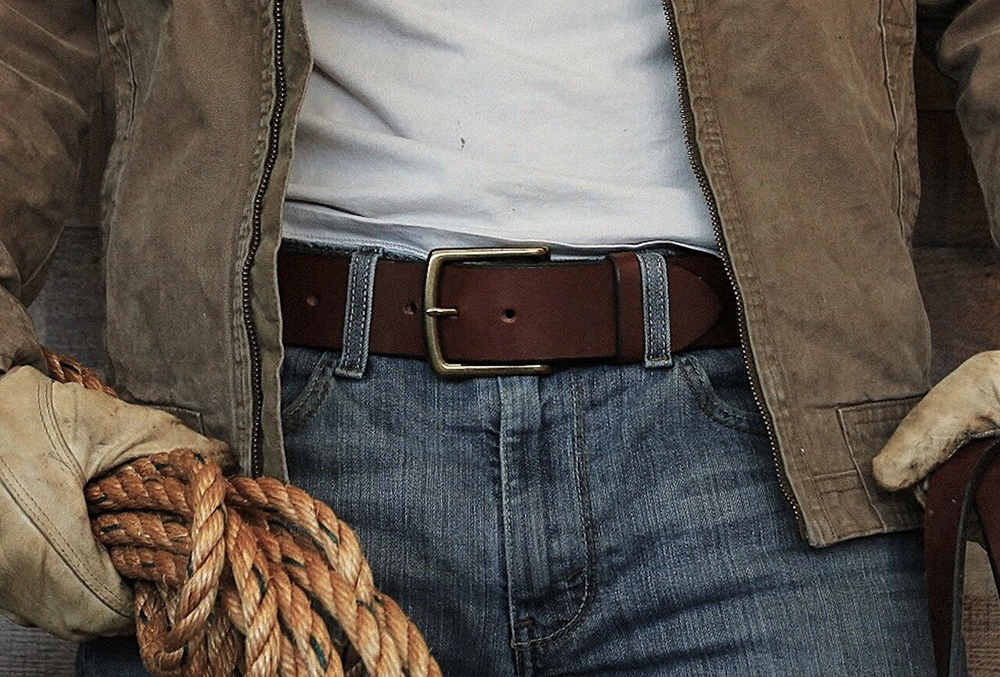Most guys don’t really pay attention to their belts. To them, it’s merely a tool to keep their pants from falling down.
Actually, the belts have a significant impact on your overall outfit. It can either be the centerpiece that brings it all together or the one thing that destroys it.
So, how do you make the right choice? How do you know what measurements to look out for? What color and material should you get?
Gentlemen, we’re going to answer all that and more in this article. We’re going into the basics of men’s belts and how to find the perfect one for you.
1. The Anatomy Of A Belt
Men’s belts are clinching mechanisms that go around your waist, making use of tension to hold up a person’s trousers.
The largest part of the belt is called the strap. This is the band that goes around your waist. At the very end, there’s the buckle.
The traditional buckle consists of the frame, the bar which goes through the leather to keep it in place, and the prong which goes through the belt loop.
2. How A Belt Should Fit
Now, let’s get right to the main point: Fit.
At the end of the day, a belt is a practical addition. Before it looks good, it needs to do its job. So, how do you find this out?
A belt’s size is determined with your waist measurement. So, the first step is to know what trousers fit you in the first place.
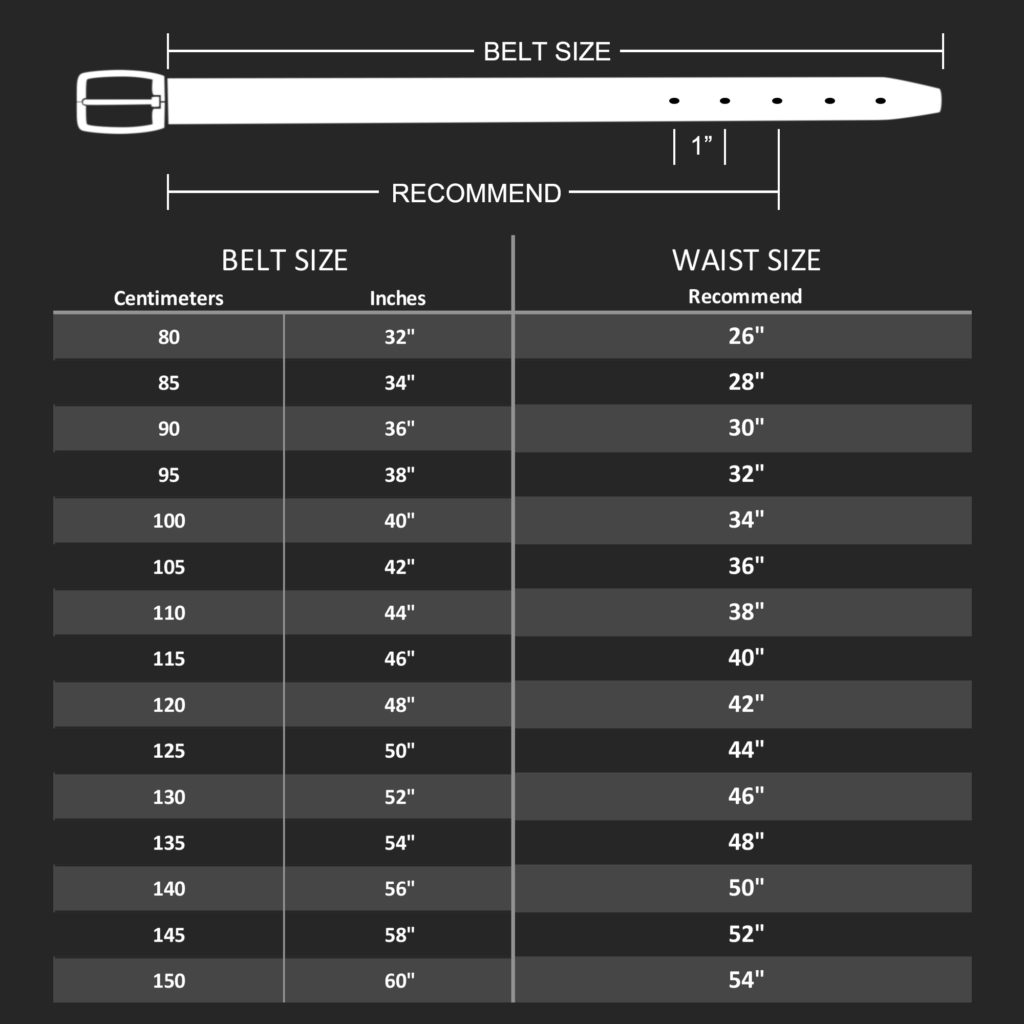
If you wear a 34″ trouser waist, a belt labeled 40″-42″ will probably be in the right neighborhood. Therefore, just remember that it’ll set a bit tighter when it’s worn properly.
3. Belt And Buckle Styles
Normally, the bigger your belt buckle the less formal it is. Larger or brighter buckles with rounded shapes are common on more casual styles.
On the other hand, dress belts typically have small, flat belt buckles and tend to be narrower belts themselves. Moreover, almost all dress belts will have either a gold-colored or silver-colored finish.
- Buckles with a prong: In these cases, the belt slides through a loop of metal.
- Buckles with a sliding hatch: The belt goes through a metal latch, where a peg presses the belt in place.
- Belt Buckles with a hook: A plate made of metal or plastic is attached by slipping a hook on the back of the buckle through the front of the belt.
- Braided belts: Since the belt is woven, there are no holes. Instead, the tongue can slip between any of the bands.
Buckle Styles
- Frame styles: The essential style of formal men’s belts – a simple rectangular shape.
- Plates: They are usually decorative and informal, common on cowboy and biker belts. These belts feature a hook towards the back which goes through the strap.
- Box frame: The box is hollow and the belt passes inside it, with a peg that keeps the belt in place inside. This means that these belts require no holes.
- D-Ring: One-or-two rings make the buckle and the belt is fastened by threading through them, usually a casual style.
Strap Styles
- Leather is the tried and tested option – it’s much more formal than other styles, but keep in mind the color and shading, as that will change the formality of the belt.
- Leather-backed ribbon allows you to stand out from the crowd with bright colors. They usually go well with activities such as sailing, and pair well with boat shoes.
- Canvas is commonly used with uniforms with plain buckles to emphasize functionality.
- Webbing is a material often used for the outdoors. Don’t pair this with a suit.
- Vinyl is cheap and colorful. They are certainly part of a young man’s game, worn often to instill a rocker aesthetic.
4. The Different Categories Of Belt
Dress Belts
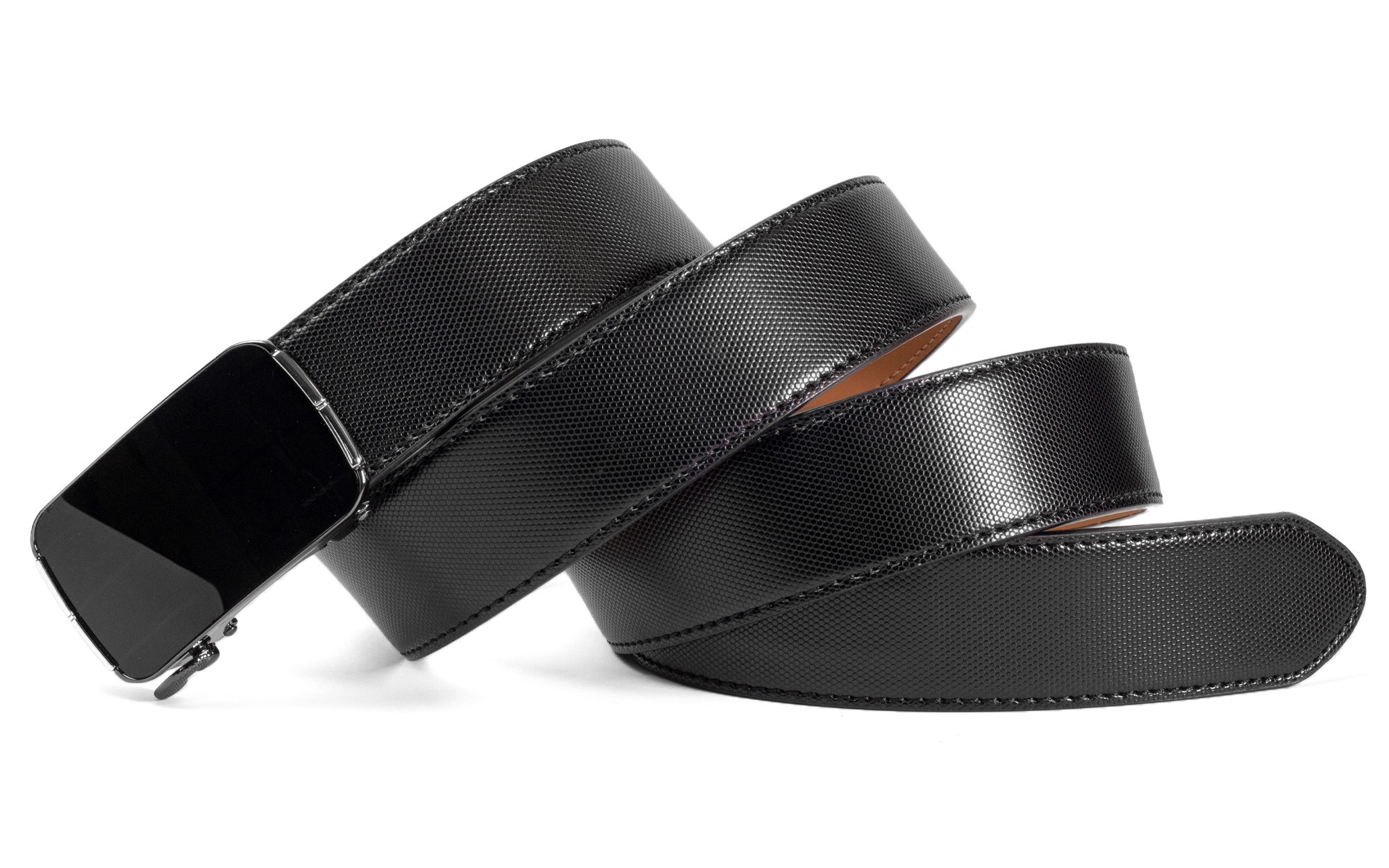
Dress belts will typically be made with fine-grain leather, both on the top and underside. They should not exceed 1.5 inches in width, or it becomes a casual belt (which I’ll cover below).
The end should be long enough to finish through the first loop of your trousers only.
The quality of the leather is the one common factor: Calfskin is the most common material used for such belts, and a good one will have soft, supple leather.
Casual Belts
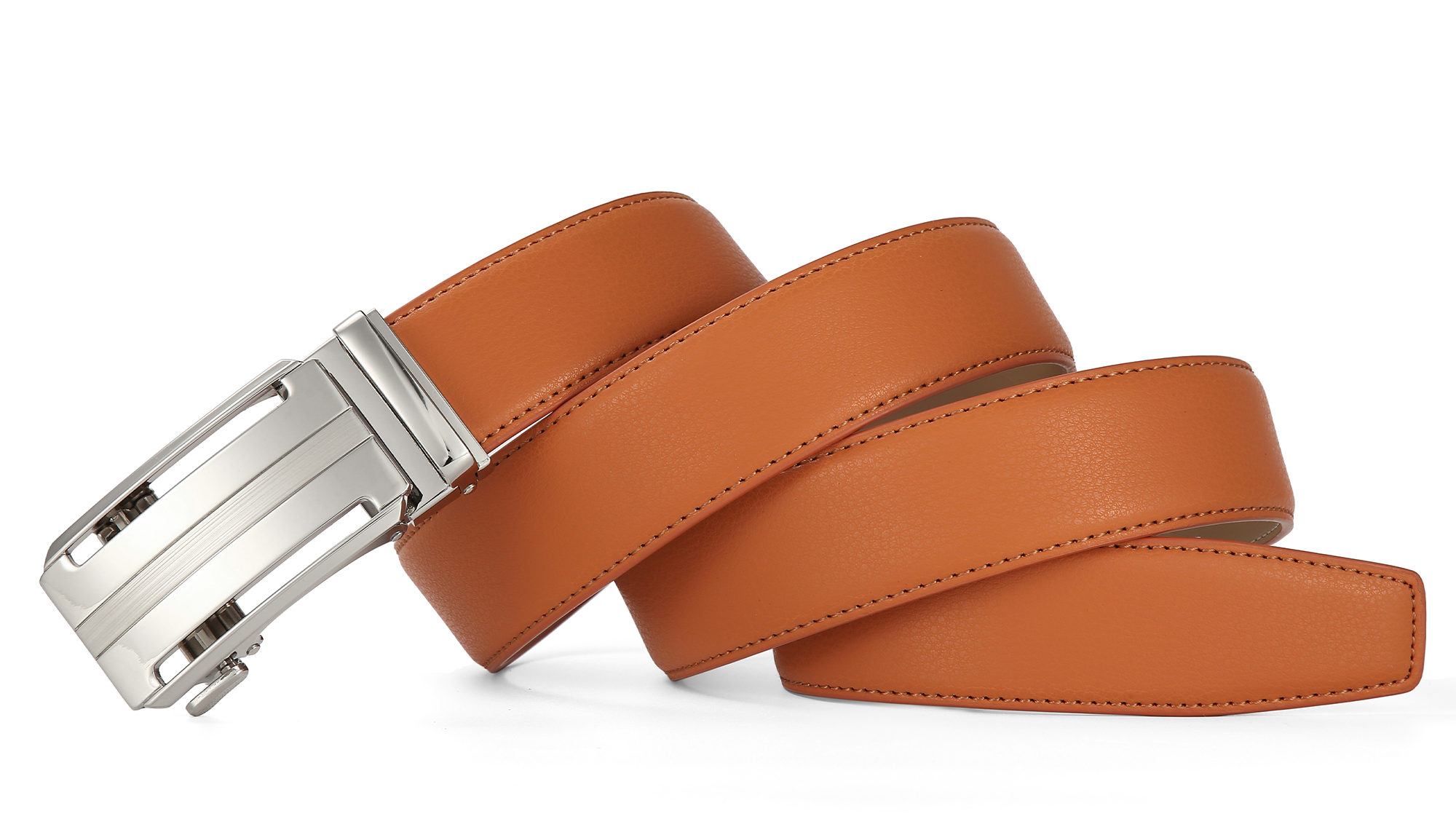
As its formal cousin, a casual men’s belt can utilize the same colors and leather, but it can come in many more styles.
Casual belts have an inherently dodgy ring to them, but we’re not talking about buckles only that belong in a line-dancing class, but rather slick leather designs which are less reserved than formal belts.
Reversible Belts
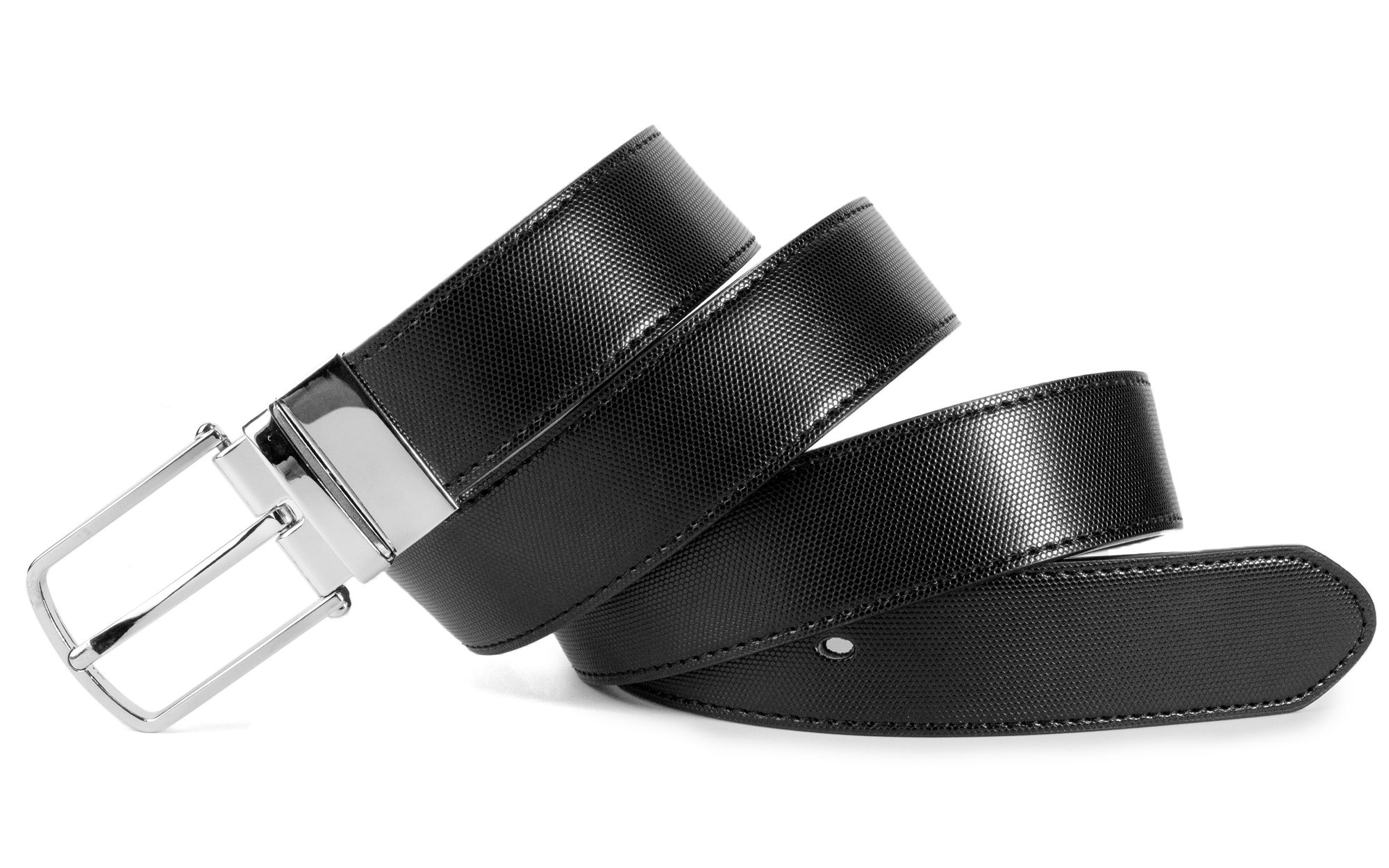
These belts come with a twisting buckle, allowing you some versatility in your wardrobe. All you have to do is pull the buckle up and twist, and voilà – you have a second belt.
Reversible belts are commonly found with black and brown sides.
5. Buying Men’s Belts
Very similar-looking belts sometimes vary widely in cost.
Flex the belt to make sure it hasn’t turned brittle or started to crack. In addition, another good test of leather is to score the back very lightly with your fingernail. If a faint line appears, the leather is still soft and fresh. Old, hard leather will resist your nail.
Construction is the other major factor affecting the price of a belt. Look for small, tight stitching with no loose ends wherever the leather has been sewn.
Belts & Jean Labels
Speaking of designer goods, some high-end jeans have a famous label right between two of the belt loops. To display the label more prominently, you may be tempted to leave the belt off.
Don’t do this.
Un-belted jeans, even expensive ones, make you look like a slob. Choose a slim belt that lets part of the label show and leave it to other people to notice your fantastic style – or not. If they weren’t in the know you weren’t going to impress them anyway, right?
Belt Colors
Leather should always match leather. That rule stays with you in dress and casual wear: brown leather shoes go with a brown leather belt, and black with black.
Glossy belts should be paired with highly-polished shoes; matte shoes go with matte belts. If you’re wearing casual shoes that aren’t made of leather, you have more freedom to work with. Cloth shoes can be paired with cloth belts of a different color.


